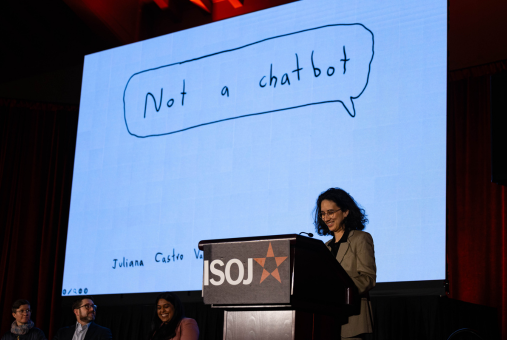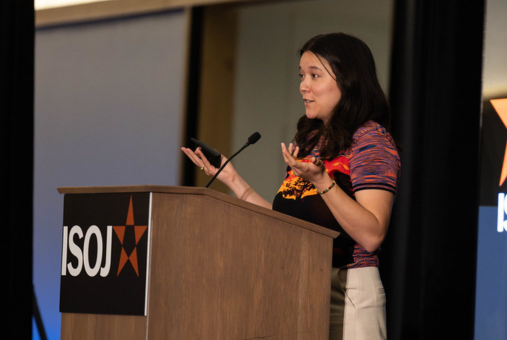
Speakers at ISOJ 2025 discussed threats and opportunities for innovation presented by artificial intelligence as the technology is rapidly changing how journalism is practiced.

AI has quickly reshaped journalism, so how are newsrooms adapting? At ISOJ 2025, experts agreed that while AI can help reporting, storytelling, and misinformation detection, human oversight remains essential.

Learn the meaning of advanced AI terms such as data mining, predictive analytics, and semantic search. See examples of how journalists and news outlets around the world have applied these concepts to make the most of AI in their daily work.

To help reporters navigate the evolving technological landscape, the Knight Center is offering a FREE, four-week course: “Prompt Engineering 101 for Journalists.”

From AI tools to combat censorship and disinformation to international collaborations exposing cross-border crime, these 10 projects advanced journalism and made an impact on their communities.

Chatbots with traditionally feminine names can reflect how technology perpetuates gender stereotypes, linking women to service-oriented roles. Despite the intention of neutrality, these elections can continue to reproduce a traditional view of gender roles in society.

Artificial intelligence is transforming tasks previously done by journalists, like news writing, image generation and data analysis.

Argentina’s pioneering Chequeado created a lab to run experiments with artificial intelligence. In their first run, they tested how four AI models could help simplify complicated concepts.

A Reuters Institute study showed that the most popular generative AI platform in Argentina is by far ChatGPT, although very few people use it to get news. It also showed that Argentines have slightly more confidence than people from other countries that the news media make responsible use of this technology. Two journalists from that country shared their opinion on the findings.

The 25th International Symposium on Online Journalism (ISOJ) brought examples of the uses of artificial intelligence at UOL, The Marshall Project and The New York Times, while research by the Associated Press reveals the impact of generative AI on journalism around the world.

“The human component is always in the middle,” said Sebastián Auyanet Torres, Audience Strategist at NowThis, when referring to artificial intelligence (AI) initiatives during the final panel at the 25th International Symposium on Online Journalism (ISOJ) on April 13. The panel featured several technology specialists including Andrea L. Guzman, associate professor, Northern Illinois University; Nicolás Grossman, deputy project […]

Journalists are increasingly using social media and open-source intelligence techniques to cover conflicts and conduct in-depth reporting. Panelists at ISOJ discussed how these techniques, combined with collaboration and verification methods, are uncovering crucial information, from geolocation of war crimes to identifying military staff in videos.